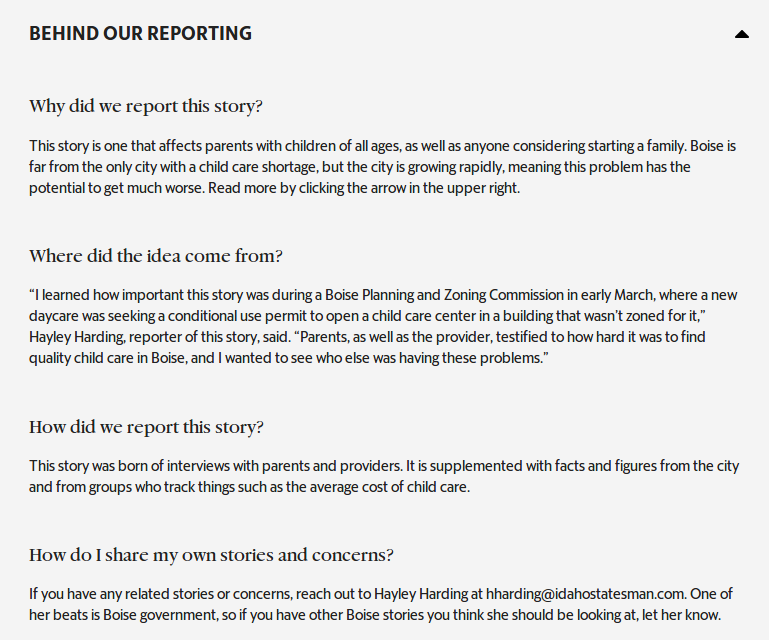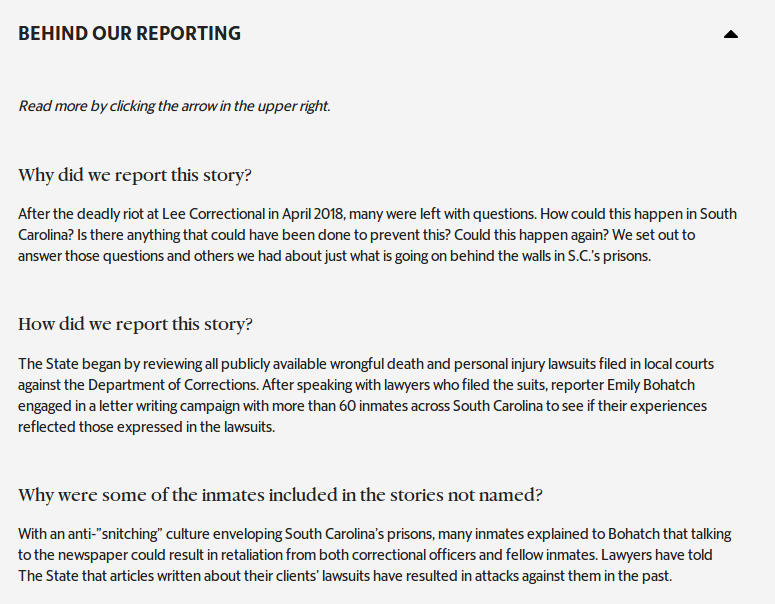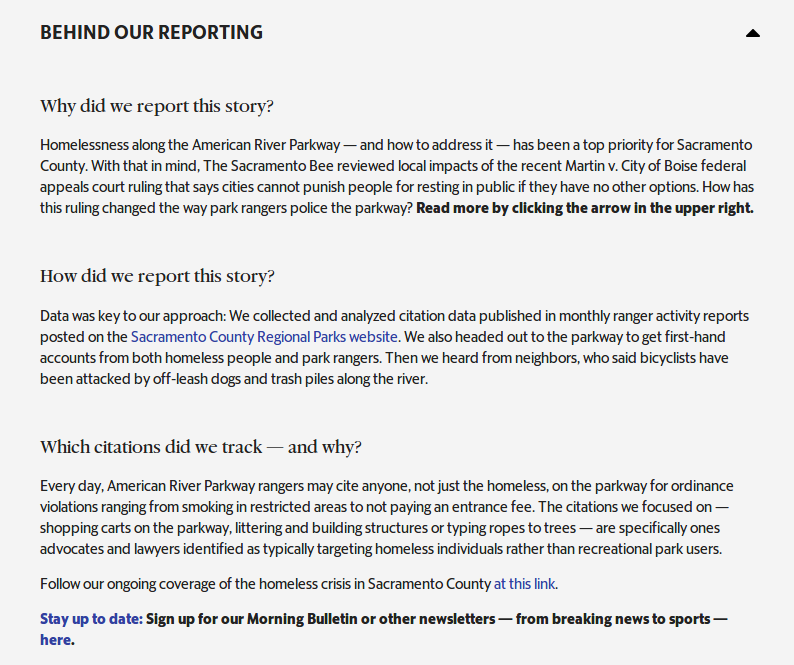McClatchy launches story-level feature to boost journalistic transparency
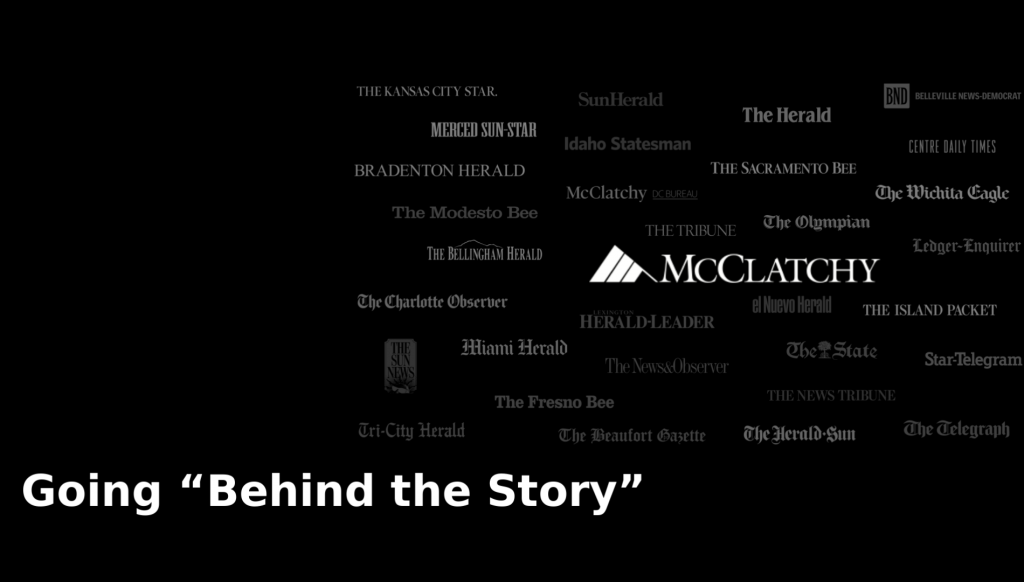
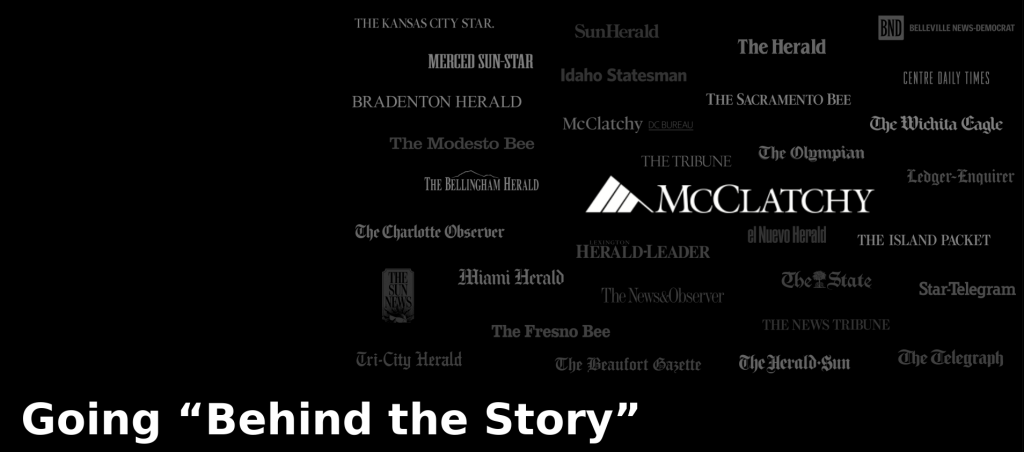 Historically, journalists haven’t been pushed to show their work. We demanded transparency from the government, but old-school journalists recoiled at the idea of offering much ourselves.
Historically, journalists haven’t been pushed to show their work. We demanded transparency from the government, but old-school journalists recoiled at the idea of offering much ourselves.
That’s been changing for the better, if too slowly, in America’s newsrooms. But now, a major news company has built a new tool within its content management system to help its journalists make a transparent leap forward.
In recent weeks McClatchy has been testing — and has now deployed — what it calls the “background card” feature, which makes it trivially easy for journalists to embed transparency and invite engagement with readers in online stories. Reporters and editors have been explaining who they are, how they do their work, and why they do it. McClatchy is a local news media company in 30 markets around the United States.
The News Co/Lab helped launch the background card this month in a company-wide webinar. We had lots of compliments to offer about how the journalists were using it so far. The best part: They are just getting started.
Mike Fannin, editor of The Kansas City Star and central region editor for McClatchy, describes the card as “a critical new feature that allows us to show readers how we do our work … We’re finding it has potential application across a wide spectrum of content.”
Over the past 15 months or so, we’ve been working with several McClatchy newsrooms — notably in Fresno, California, and Kansas City — where editors were, early on, eager to experiment with ways of enhancing transparency and the related practice of engagement, which we define as deep conversations and collaborations with people and institutions in the communities they serve.
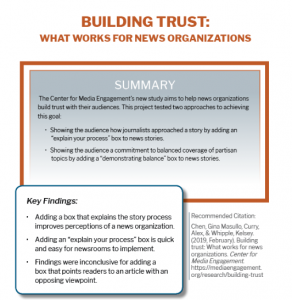 Research — by us and others — makes clear that these newsroom practices bring real benefits to everyone involved. A key one is boosting trust in journalism. We’ve also learned during this process that journalists themselves have to believe in those principles.
Research — by us and others — makes clear that these newsroom practices bring real benefits to everyone involved. A key one is boosting trust in journalism. We’ve also learned during this process that journalists themselves have to believe in those principles.
Plainly, more and more of them do. Fannin and McClatchy colleague Joe Kieta, editor of the Fresno Bee, have become major advocates for transparency and engagement.
Until now the transparency piece has been a do-it-by-hand process requiring extra steps for reporters and editors. But anyone familiar in the slightest with daily news work knows that adding chores to an already packed daily routine, while worth the trouble in this case, is still adding work.
Crucially, McClatchy’s product team also considers trust and transparency to be an essential part of the newsrooms’ work. After brainstorming sessions with Kansas City’s newsroom and further conversations with Kieta, the company’s product and design people created the feature to help reporters and editors include the background card in a story directly from their content management system.
“Our reporters and editors, especially in Kansas City and Fresno, have been sharing “behind the story” information for many of their enterprise-type ‘big’ packages,” says Ryan Tuck, McClatchy’s product manager for news strategy. “But they had been doing so somewhat manually, via separate stories that they linked from the main packages.”
The background card design aimed to give the journalists “the tools, and flexibility, to do more — to share that information more prominently and easily within the reading experience,” Tuck says. The product team worked to ensure that “newsrooms could be as transparent as possible in sharing this information” and that readers would find it easily as part of the digital reading flow.
A key design goal was flexibility. “Our teams can place the ‘behind the story’ information wherever makes sense within a given story,” Tuck says. “And they can adjust the type of information they share to the story type, too.”
The newsrooms are experimenting, with intriguing results. Here are some examples of the background card as it’s been embedded in various stories:
In the above example, the Raleigh News & Observer agreed with its critics’ point that language like “police-involved shooting” is, as the news organization put it, “cryptic and ambiguous” — and then explained why it had done so in this case.
The Idaho Statesman, based in Boise, invited further engagement with readers in the above background box when the reporter invited residents to offer their feedback — and suggest follow-up coverage and other stories.
As the above backgrounder explains, The Kansas City Star and the Kansas City Public Library embarked last fall on an impressive collaboration on a series of questions and answers that not only provided answers but also how the research was done.
One of the practices that tends to leave readers baffled is the use of anonymous sources. Above, The State in Columbia, South Carolina, explains why it allowed some of its sources to remain unnamed, citing the strong possibility of violent retaliation against them. Answering “why” and “how” shone a light into the journalistic process.
In its backgrounder above, the Sacramento Bee talks about the data it used — and links to that data — from local government. It also explains which kinds of citations it used, and why. The newsroom also links to its ongoing coverage and invites readers to subscribe to a morning newsletter.
As you can see from some of the examples, the background cards are ideal places to ask readers for their own contributions. You can imagine all kinds of invitations, such as: Where should this story go next? What else should we tell you in the “Behind Our Reporting” boxes?
Keep in mind that McClatchy sees this as a work in progress, with iterating part of the development cycle. Tuck and the product team have lots of ideas on how to improve the user experience for journalists and readers. Metrics will help make that happen.
“We are analyzing a lot of metrics for how these cards are being used and plan to evolve and grow the tool based on that feedback and other research,” he says. “There is much more to come!”
In a world brimming with information, and too much misinformation, people need all the help they can get in understanding how news works, and using that knowledge to better filter fact from fiction. Transparency is one of the best ways to do it, and we’re glad to see how McClatchy is embedding it in the journalism.
(Thanks as always to our funders including the Democracy Fund, Facebook Journalism Project, News Integrity Initiative, and Rita Allen Foundation.)
Dan Gillmor is a longtime participant in new media and digital media literacy. He’s author of the 2009 book, Mediactive, discussing media literacy in the digital age from a journalist’s perspective.


